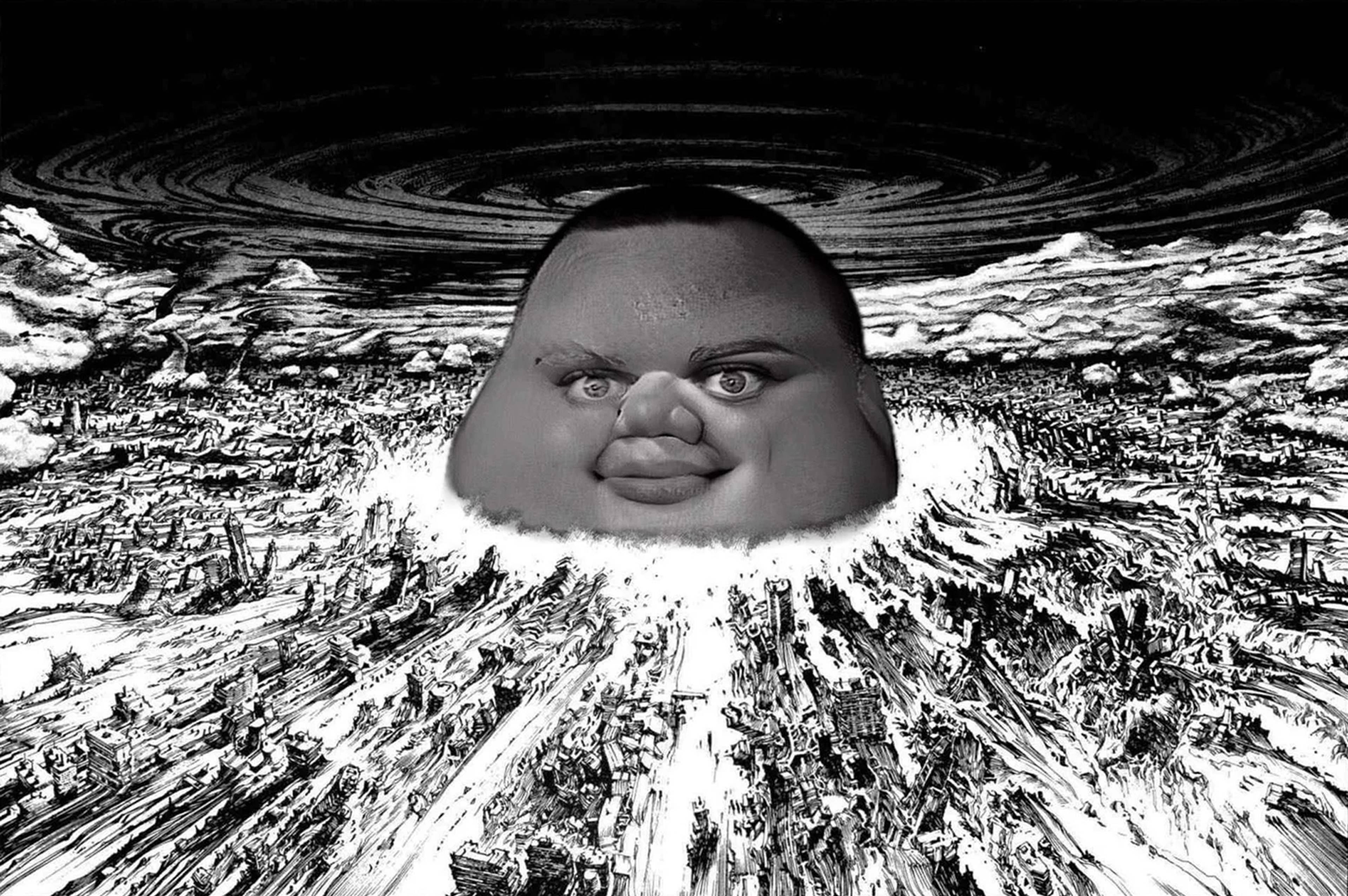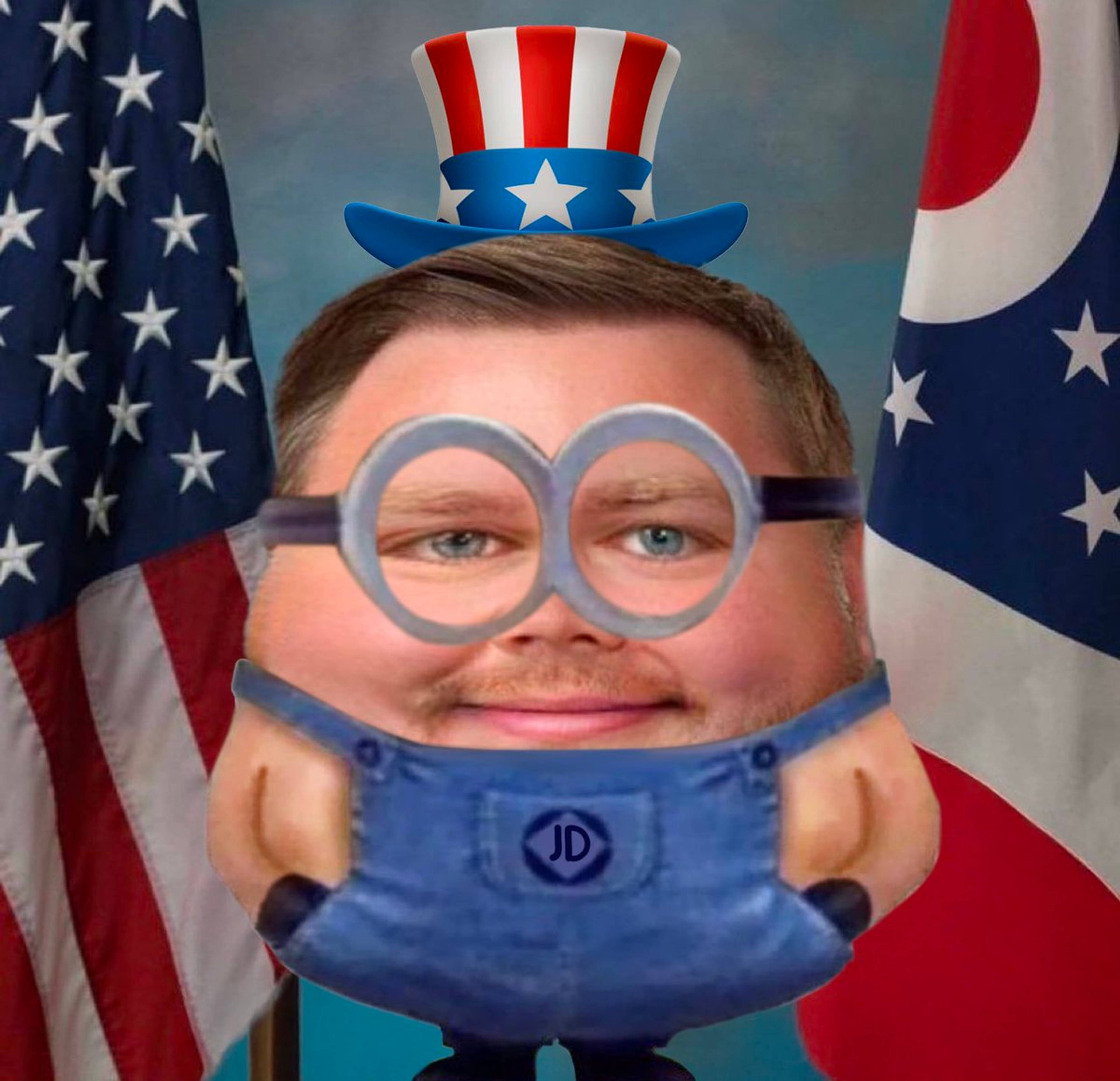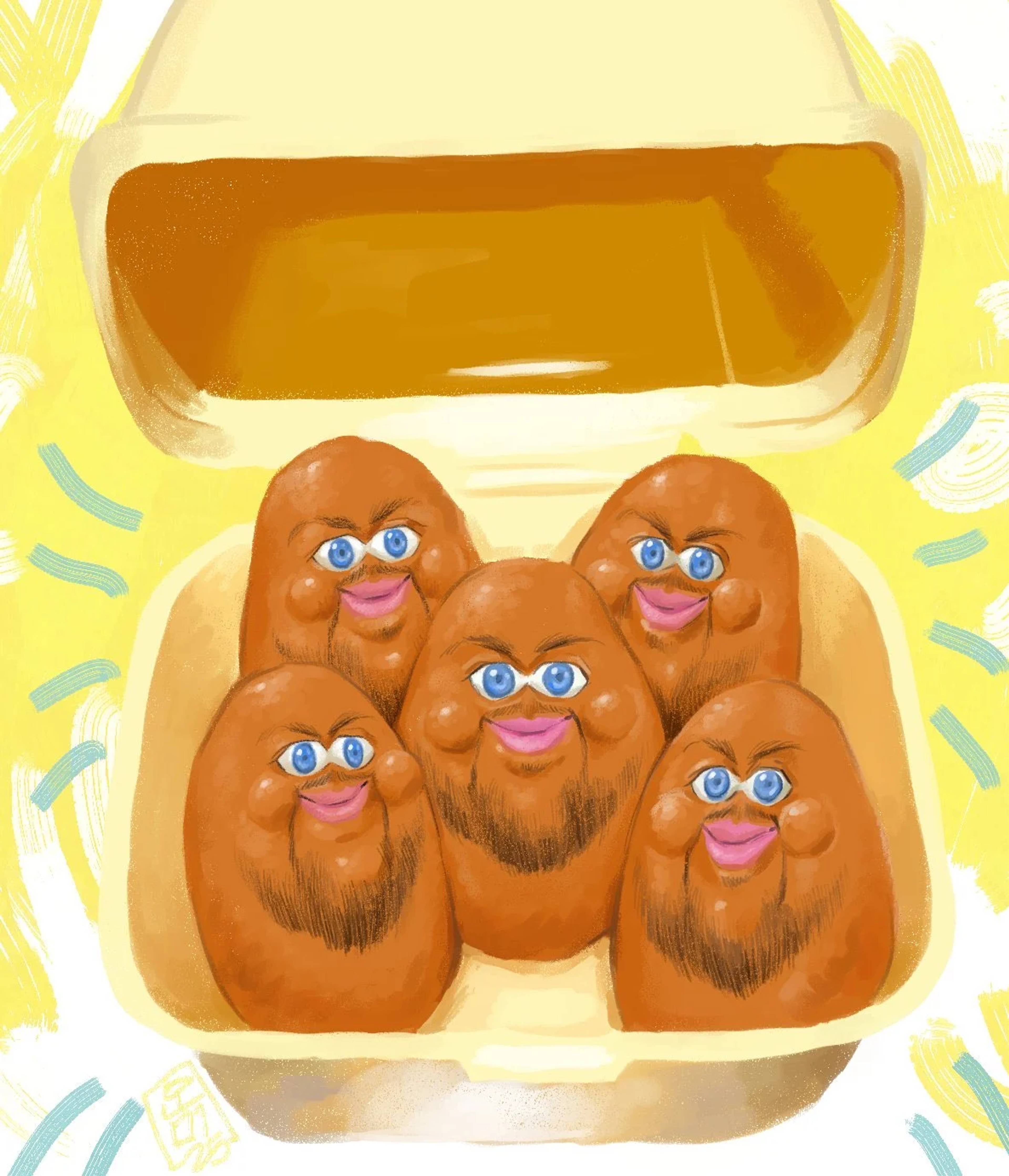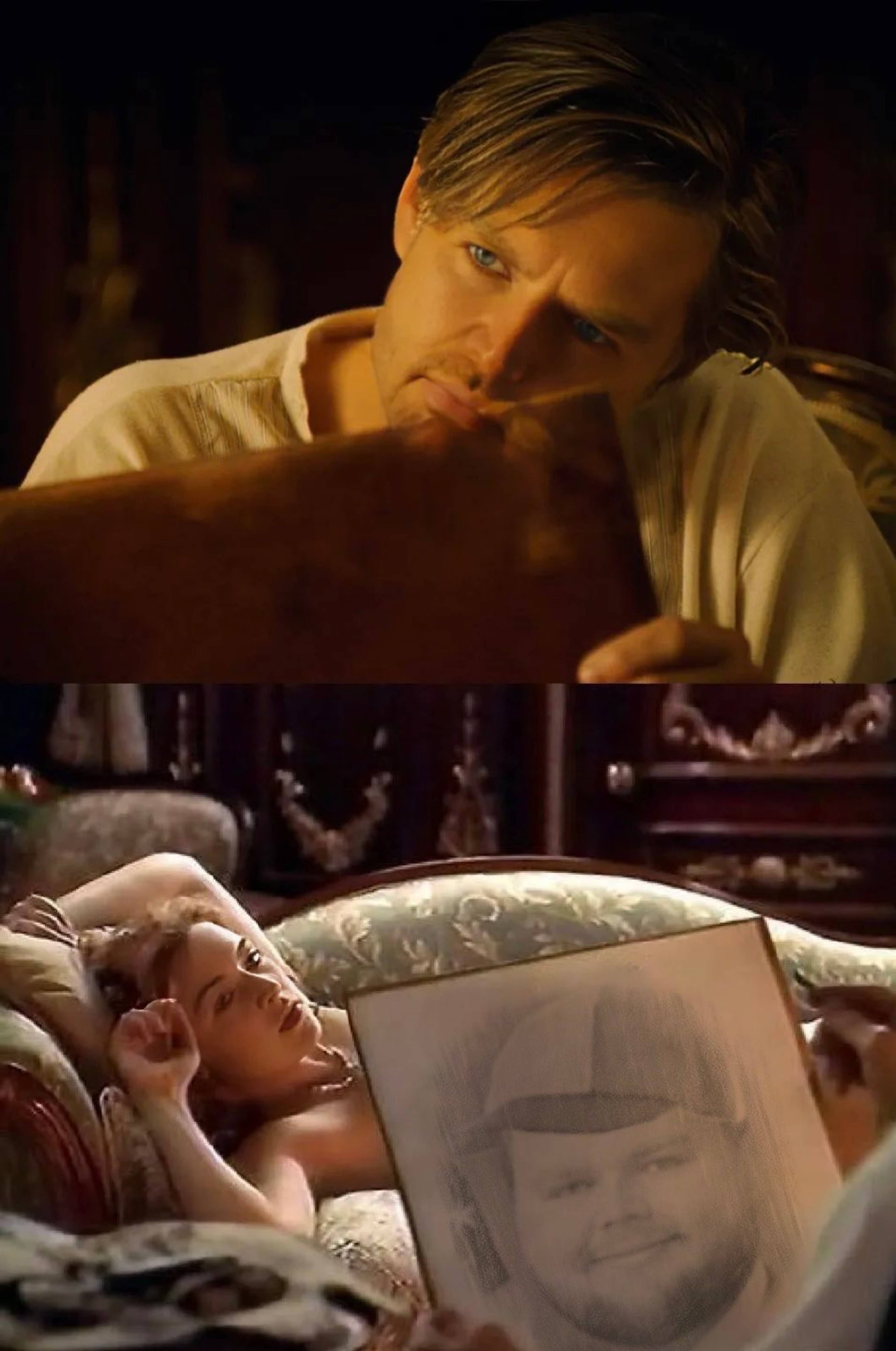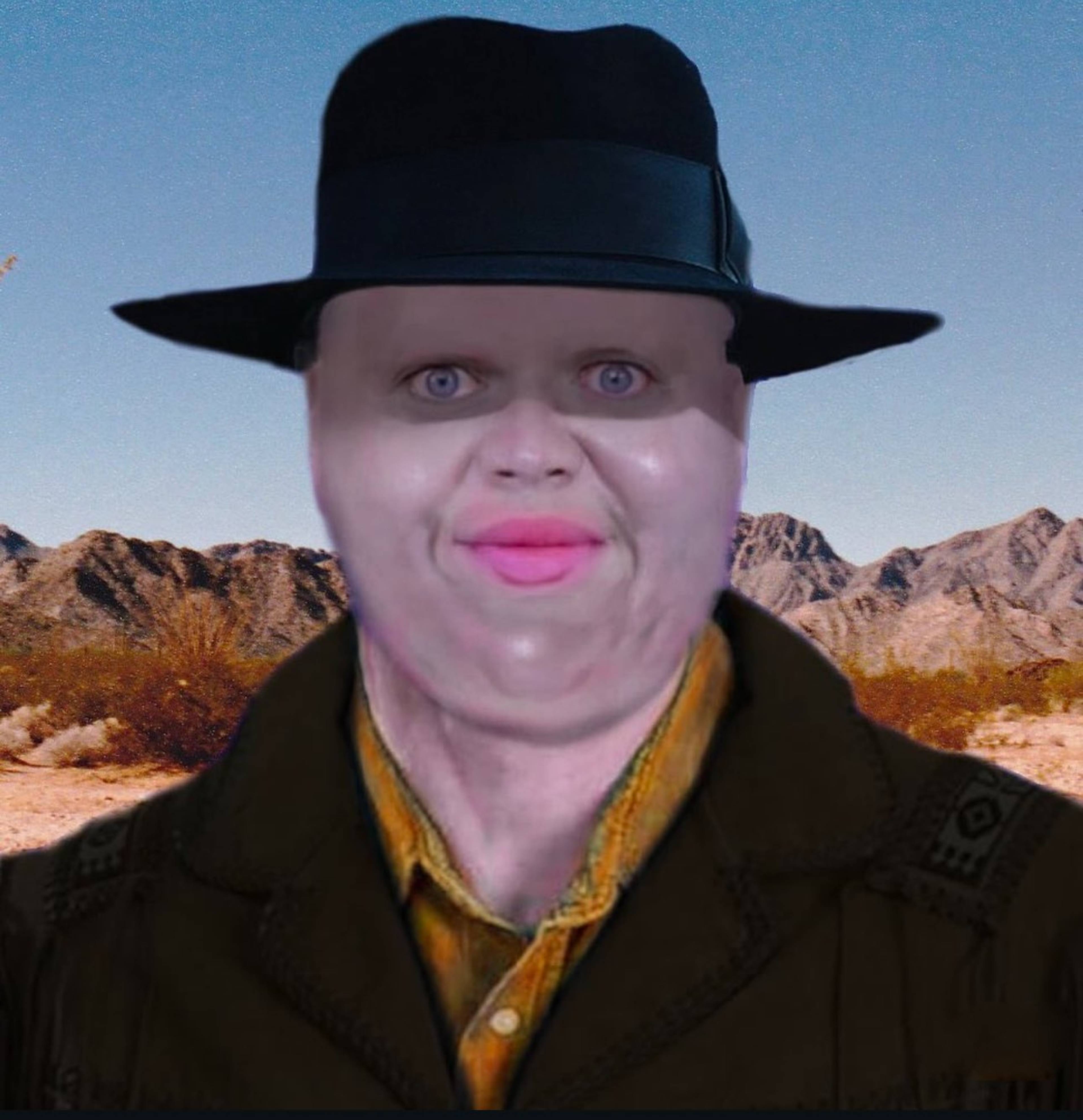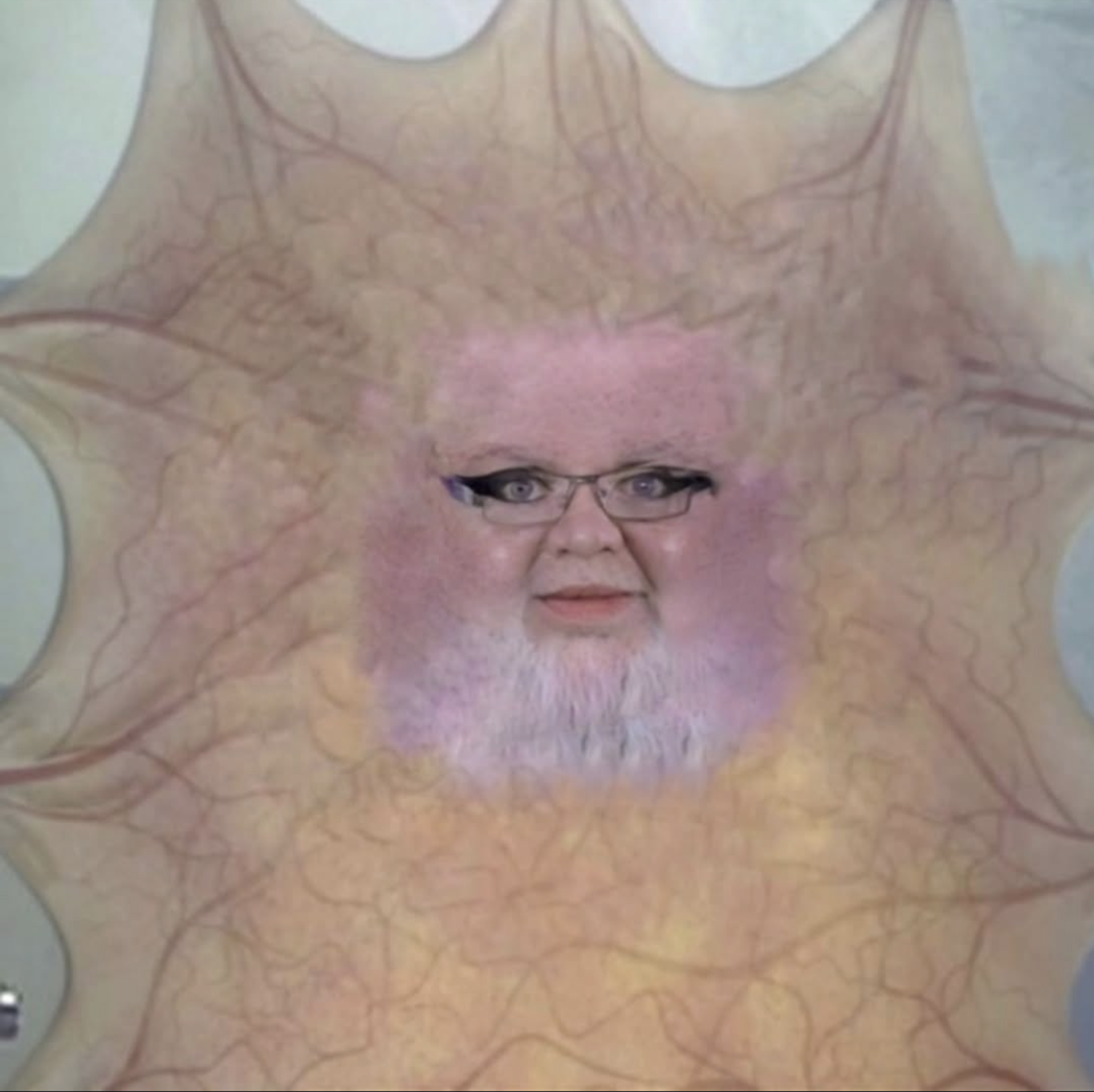The head of JD Vance started as a regular head. Maybe slightly larger and pudgier than average, but not unusual. It was five gallons in a ten-gallon hat. The head studied at the best schools, where it learned how to blend in, code-switch, read a room. This education served the head well in politics. It promised to explain destitute, drug-addled, middle-America voters to coastal elites, then changed sides, offering to fight coastal elites on behalf of average god-fearing Americans. The head grew steadily larger, bit by bit, until no one could remember its original shape, or if it had changed at all. In 2025, the head became Vice President. Then the head became a meme.
The first sign of trouble was when it wore eyeliner. The head was known to affect wounded, emo airs, yet never strayed from a masculinist self-presentation. But its quick rise to power, and sudden dominance on television and social media, began distorting its image. The head felt the urge to assert itself. When the president of Ukraine came to the White House, the head put its foot down. It made demands. It babbled like a baby with gout, berating Volodymyr Zelenskyy to his face and threatening to withhold war aid. It was an international scandal. NATO countries began strengthening their militaries.
As a puffier version of himself
As a Minion
As a serving of McNuggets
And so, the meatless head had debuted. The internet was suddenly filled with pictures of the mercurial head, as Minion or Pokémon or Harkonnen, ragged or egg-bald, mimicking pop good and evil. Traditional news outlets ran explainers. Savvy commentators observed that the head, unlike others in its circle, had a doughy, malleable quality that practically begged to be misshaped. Perhaps this was finally the #Resistance to MAGA, hitting its thin-skinned, pseudo-populist leaders in their vanity, the chink in their bully’s armor. Perhaps the left could meme after all. At least it was cathartic.
Vance was not unaware of his head’s newfound fame. The Vice President tried to show he was in on the joke, even though he wasn’t, by tweeting a meme of the head as Leonardo DiCaprio’s cowboy character in Once Upon a Time in Hollywood (2019) recognizing himself on television. This was a credible picture of his role in the head’s ascension, and the head absorbed this meta-commentary readily. The head appeared as Leo in Titanic (1997), sketching Kate Winslet like one of his French girls, except the sketch is a self-portrait of the head.
As Leonardo DiCaprio in Titanic (1997), sketching Kate Winslet like a self-portrait of his head
Other, perhaps savvier, pundits noted that many of the head memes were made by conservatives. It’s an easy mistake for the image-conscious to assume that unflattering pictures of a leader must be insults. Some versions of the head had the quality of fraternal razzing, a sign that this head was one of the internet’s own. Any hope that the head’s meme-dom was a withering critique proved to be misplaced.
What it proved, instead, was the smothering banality of the images now used by the powerful to gather power. Donald Trump’s chintzy ad-man style had seemed shameful. Elon Musk’s K-fueled posting in the wee hours had seemed undignified. Now this was the norm. And the head of JD Vance, having started as a regular head, but now wearing the internet as a soiled gambler’s hat, showed that this new order was here to stay.
The head was mercenary, a creature of social media loyal to its image even before its erratic politics. It would say anything for power and prestige. It would take any form. And it would clothe itself in mock indignation. Blatantly, the head ate Willy Wonka’s experimental gum and turned blueberry-blue. And yet it denied it: “For the last time, Mr. Wonka, I did not try any experimental gum,” it said. “And frankly I find this entire line of questioning insulting.”
Exiting the US Capitol
Now the head tried on famous photographs, the tousled mug shot of Ted Kaczynski and the beautiful Afghan Girl from the National Geographic cover. Its eyes piercing blue, its brow furrowed, the head insinuated itself as slightly as possible. As the head’s manifestations grew wild, the head didn’t lose its essence. Its essence was ambivalence. It realized it was less a physical organ than a motivation – cancerous, monstrous, ultrahuman. The head landed in the Tokyo of the post-apocalyptic manga Akira (1982–90) like a nuclear bomb, sucking the city through a corpulent singularity with its psychic powers and triggering World War III. The head heaved into eternity like the Judge from Cormac McCarthy’s postmodern western Blood Meridian (1985), a deathless, sleepless cowboy, swaddling the country with greed.
This was not the end of the head. It had completed its transformation into a sublime hyperobject, interpolated with the universe. The energy of the head had returned, as a memetic residue, to the online culture that spawned it. Had it been a protest? A tribute? A coup? It had been everything: the head of JD Vance reveling in its mutant will to power. In the aftermath of the head’s explosive growth, even the head’s enemies had to concede that the head had emerged unscathed. On the contrary, its agnostic features made it strong.
As The Judge from the novel Blood Meridian (1985), of whom it is written, “He never sleeps, he says. He says he’ll never die.”
As the last pure human from the TV series Dr. Who (2005–22)


